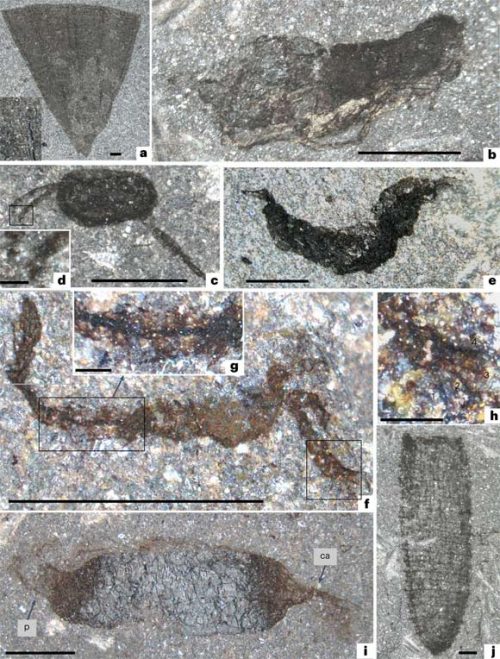The Castle Bank Fossil Site dates back to 462 million years ago.
During the Ordovician Period, the area was a complex of volcanic islands within the Welsh Basin, which was part of the Avalonia microcontinent occupying the temperate southern latitudes. Castle Bank’s fauna rivals the best Cambrian deposits in abundance, labile tissue preservation and fine fossil detail, but reveals major changes in ecology. It comprises a diverse array of soft-bodied and cuticularized organisms (including many major groups), preserved as carbonaceous remains with fine detail of labile even delicate tissue. While most fossils are relatively small, between 1 and 5 mm in body size, conservation fidelity allows for the recognition of extremely fine structures within many specimens, with commonly visible detail down to 10 μm. “The estimated total diversity of species recovered so far exceeds 170 species, including 35-40 sponges, over 30 panarthropods and a wide range of other major groups,” the paleontologists said. “About 30 of these are currently indeterminate but recognizably distinct.” “In some animals, internal organs such as digestive systems and even nerves are preserved, along with the limbs of tiny arthropods and delicate filter-feeding tentacles. Such a detail exquisite is known from the best faunas of the Cambrian, but not earlier than the Ordovician.” “The range of fossils includes several unusual discoveries, from unexpectedly late specimens of Cambrian animals that look like opabiniids (strange proto-arthropods with long proboscis) and wiwaxiids (snail-like molluscs armored with scales), to tantalizingly early fossils that resemble to modern goose barnacles, cephalocarid shrimp (which have no fossil record), and possibly even a marine relative of insects.
“The Cambrian witnessed the origin of major animal groups,” they added. “The Ordovician was also a critical period in the history of life, with an extraordinary diversity of animals that produced hard skeletons and abundant fossils.” “Furthermore, more familiar ecosystems such as today’s coral reefs appeared towards the end of the Ordovician.

Until now, however, a large gap has existed between these two evolutionary events.” “A new Burgess Shale-type fauna from the middle of this range will help bridge this gap by answering questions about the transition of animals from Cambrian to Paleozoic fauna and the shift of Cambrian-style ecosystems (which were similar in much of the world) to ‘much more diverse ecology that we see today’.
